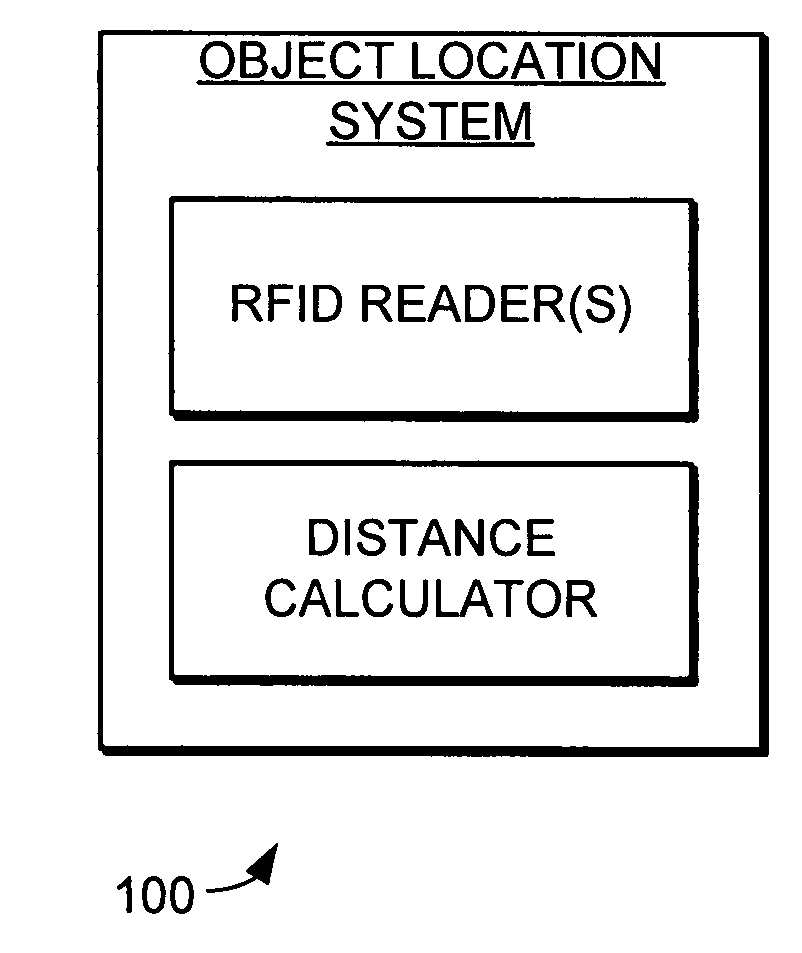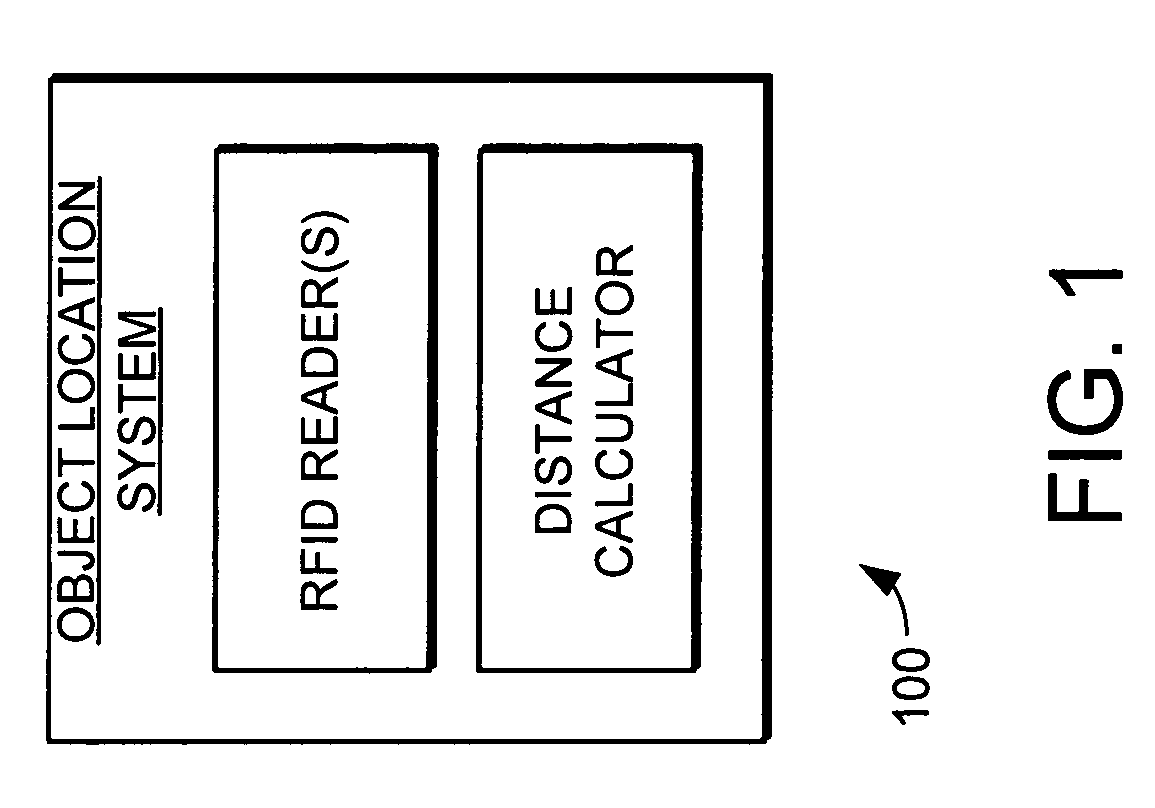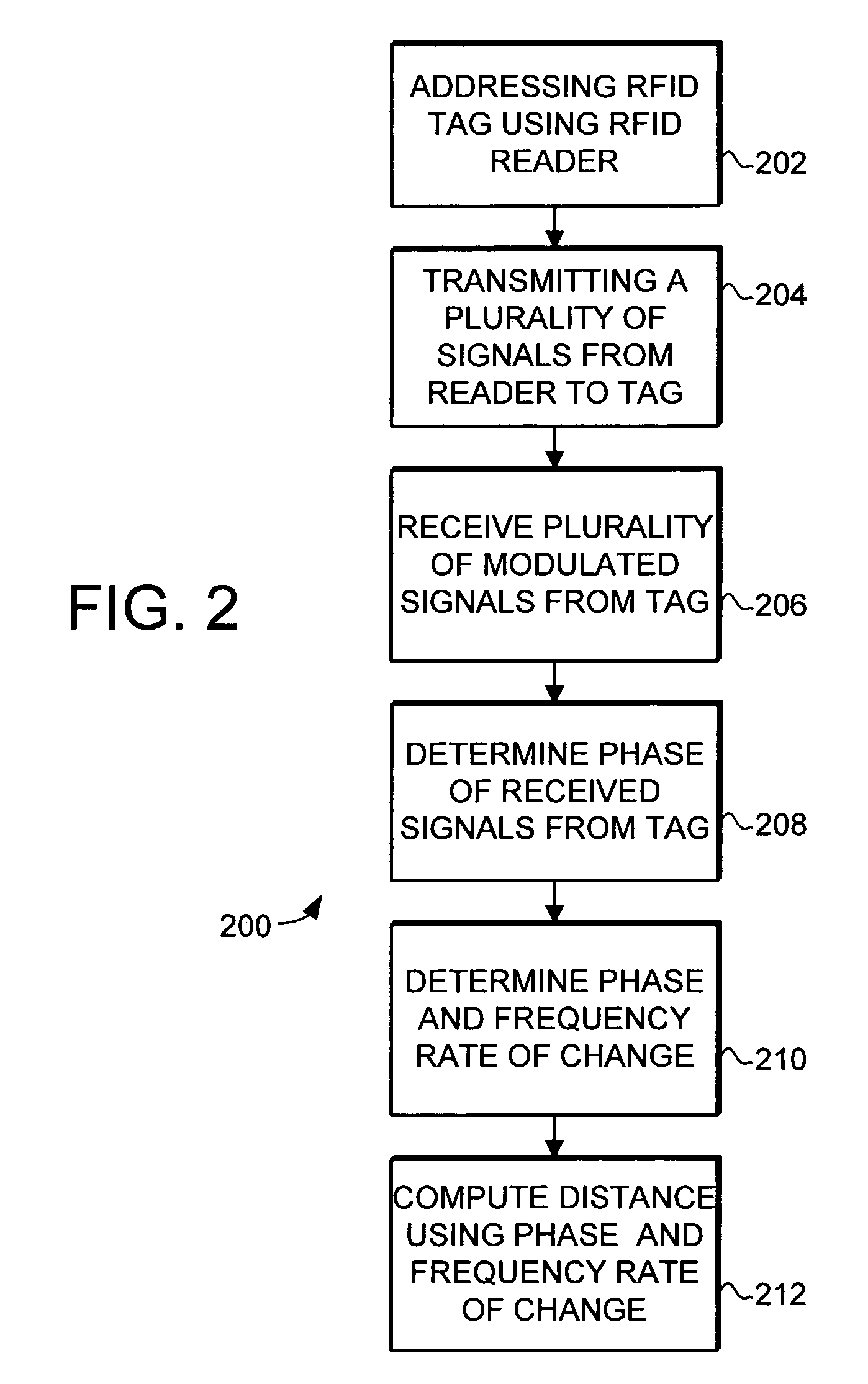Object location system and method using RFID
a technology of object location and radio frequency identification, applied in the direction of using reradiation, burglar alarm mechanical actuation, instruments, etc., can solve the problems of complex battery powered devices with high per-unit cost, inability to provide the accuracy and reliability desirable for such systems, and inability to accurately determine the location of objects, etc., to achieve efficient and accurate location, efficient and accurate location of objects, and accurate location
- Summary
- Abstract
- Description
- Claims
- Application Information
AI Technical Summary
Benefits of technology
Problems solved by technology
Method used
Image
Examples
Embodiment Construction
[0017]The following detailed description is merely exemplary in nature and is not intended to limit the invention or the application and uses of the invention. Furthermore, there is no intention to be bound by any expressed or implied theory presented in the preceding technical field, background, brief summary or the following detailed description
[0018]Generally, the present invention provides a system and method for locating objects using Radio Frequency Identification (RFID) tags. The system and method uses the phase of backscatter modulated signals from the RFID tags with respect to the fundamental frequency of the transmitted signals to efficiently and accurately determine the location of objects.
[0019]RFID is a technology that incorporates the use of electromagnetic or electrostatic coupling in the radio frequency spectrum to identify objects to which RFID tags are affixed. RFID systems in general provide the advantage of not requiring direct contact or line-of-sight scanning. ...
PUM
 Login to View More
Login to View More Abstract
Description
Claims
Application Information
 Login to View More
Login to View More - R&D
- Intellectual Property
- Life Sciences
- Materials
- Tech Scout
- Unparalleled Data Quality
- Higher Quality Content
- 60% Fewer Hallucinations
Browse by: Latest US Patents, China's latest patents, Technical Efficacy Thesaurus, Application Domain, Technology Topic, Popular Technical Reports.
© 2025 PatSnap. All rights reserved.Legal|Privacy policy|Modern Slavery Act Transparency Statement|Sitemap|About US| Contact US: help@patsnap.com



